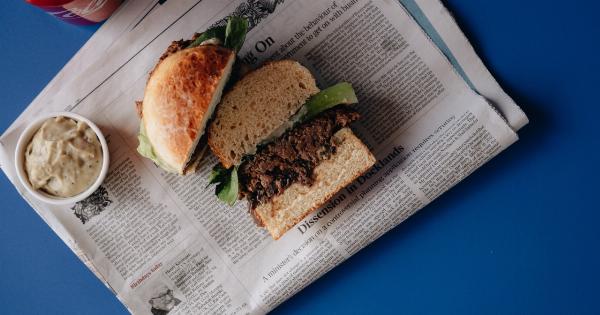Counting calories is a popular method for managing one’s weight and it is based on the idea that by consuming fewer calories than what is required by your body, you can lose weight.
However, it is important to count your calories accurately and precisely to see the best results. In this article, we will discuss some ways that you can accurately measure your calorie intake and get a better understanding of your food habits.
1. Understand the Concept of Calories
Calories are the units of energy found in food and drinks that provide the necessary fuel for our body to function. The calories in food come from three energy-yielding nutrients: carbohydrates, proteins, and fats.
Each macronutrient contains a different amount of calories per gram:.
- Carbohydrates contain 4 calories per gram
- Proteins contain 4 calories per gram
- Fats contain 9 calories per gram
When we consume more calories than we need, our body stores the excess energy as fat, leading to weight gain. To lose weight, we need to consume fewer calories than we burn.
2. Calculate Your Daily Calorie Intake
The first step in accurately measuring your calorie intake is to determine how many calories you need to consume every day to maintain your current weight.
A calorie calculator can help you determine your daily energy needs based on your age, height, weight, gender, and level of physical activity.
Once you know how many calories you need, you can adjust your diet accordingly to meet your weight loss goals.
Generally, to lose 1 pound of body weight per week, you need to create a calorie deficit of 3,500 calories, which means eating 500 calories fewer than your daily calorie requirement. However, it is important to not go below the recommended daily calorie intake as it can lead to health issues.
3. Measure Your Food Portions
One of the easiest ways to measure your calorie intake is by measuring your food portions. An accurate food scale can help you measure the exact amount of food you are consuming.
For example, measuring a serving of pasta as per the package instructions will give you a better idea of how many calories you are consuming.
If you don’t have a food scale, you can use measuring cups and spoons to measure your portions. For example, one ounce of cheese is about the size of a thumb, and one tablespoon of oil is about the size of a poker chip.
4. Read Food Labels
Reading food labels is another way to understand and measure your calorie intake. Food labels list the serving size, calories per serving, and the amount of macronutrients present.
When reading a food label, it is important to pay attention to the serving size. For example, if a serving of cereal is ¾ cup and you eat 1 ½ cup, you need to double the calories listed on the label.
It is also important to check the number of servings in a pack. Many food packets contain multiple servings.
5. Use an App or a Website
Another way to measure your calorie intake is by using an app or a website that can help you track your food intake.
Many of these apps and websites are free and allow you to log your meals, snacks, and drinks, and provide you with the calorie count for each food item.
Some popular apps include MyFitnessPal, Lose It!, and FitBit.
6. Be Aware of Hidden Calories
Hidden calories can add up quickly and ruin your weight loss efforts. Some drinks, such as soda and alcohol, are high in calories. Creamy salad dressings and high-fat condiments can also add a significant number of calories to your meals.
To accurately measure your calorie intake, it is important to be aware of these hidden calories and to make healthier choices. Switch to water instead of soda, opt for lower-calorie dressings, and use low-fat condiments.
7. Keep a Food Diary
Keeping a food diary is another effective way to measure your calorie intake. A food diary helps you keep track of your food intake and can help you pinpoint which foods are high in calories.
You can keep a journal or use an app or website to record your meals. Include the serving size, calorie count, and macronutrient information to get an accurate measurement of your calorie intake.
8. Know When to Seek Help
If you are having trouble measuring your calorie intake or are experiencing difficulty losing weight, it may be time to seek professional help.
A registered dietitian can help you develop a personalized nutrition plan that meets your individual needs and weight loss goals.
9. Don’t Obsess Over Counting Calories
While it is important to measure your calorie intake accurately, it is equally important to not obsess over it. Counting calories should be a tool to help you make healthier food choices and not a source of stress or anxiety.
It is essential to remember that every individual’s calorie requirement is different and what works for one person may not work for another.
Therefore, it is important to listen to your body, eat a balanced diet, and engage in regular physical activity.
10. Keep Your Goals Realistic
Finally, it is important to set realistic and achievable goals. Losing 1-2 pounds per week is a healthy and sustainable weight loss goal.
Aiming for quick and drastic weight loss can be unhealthy and can cause your body to go into starvation mode, leading to adverse health effects.
It is important to remember that losing weight is a journey that takes time, effort, and commitment. Embrace the process, celebrate your accomplishments, and make healthy, sustainable choices that nourish your body and mind.






























